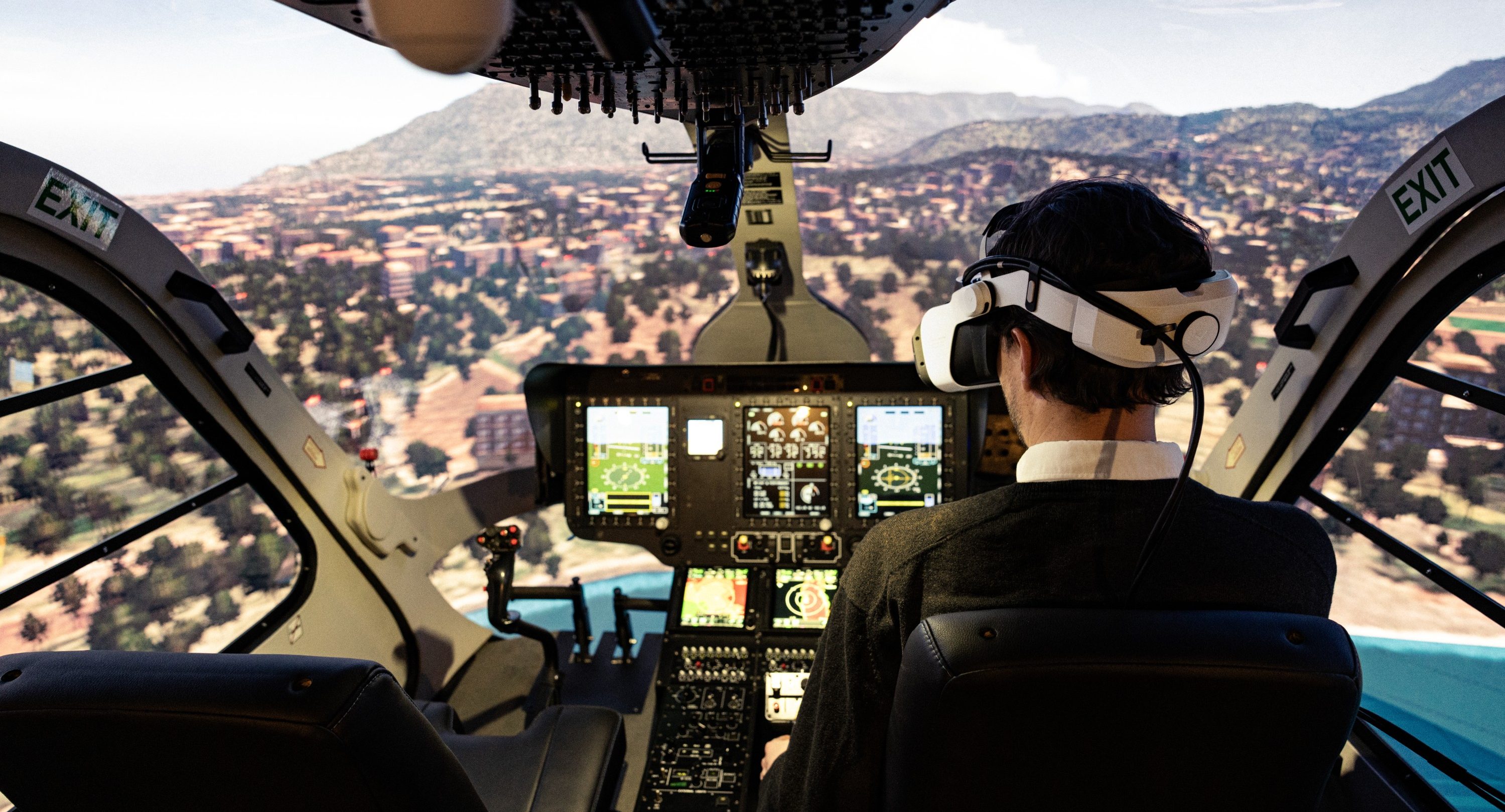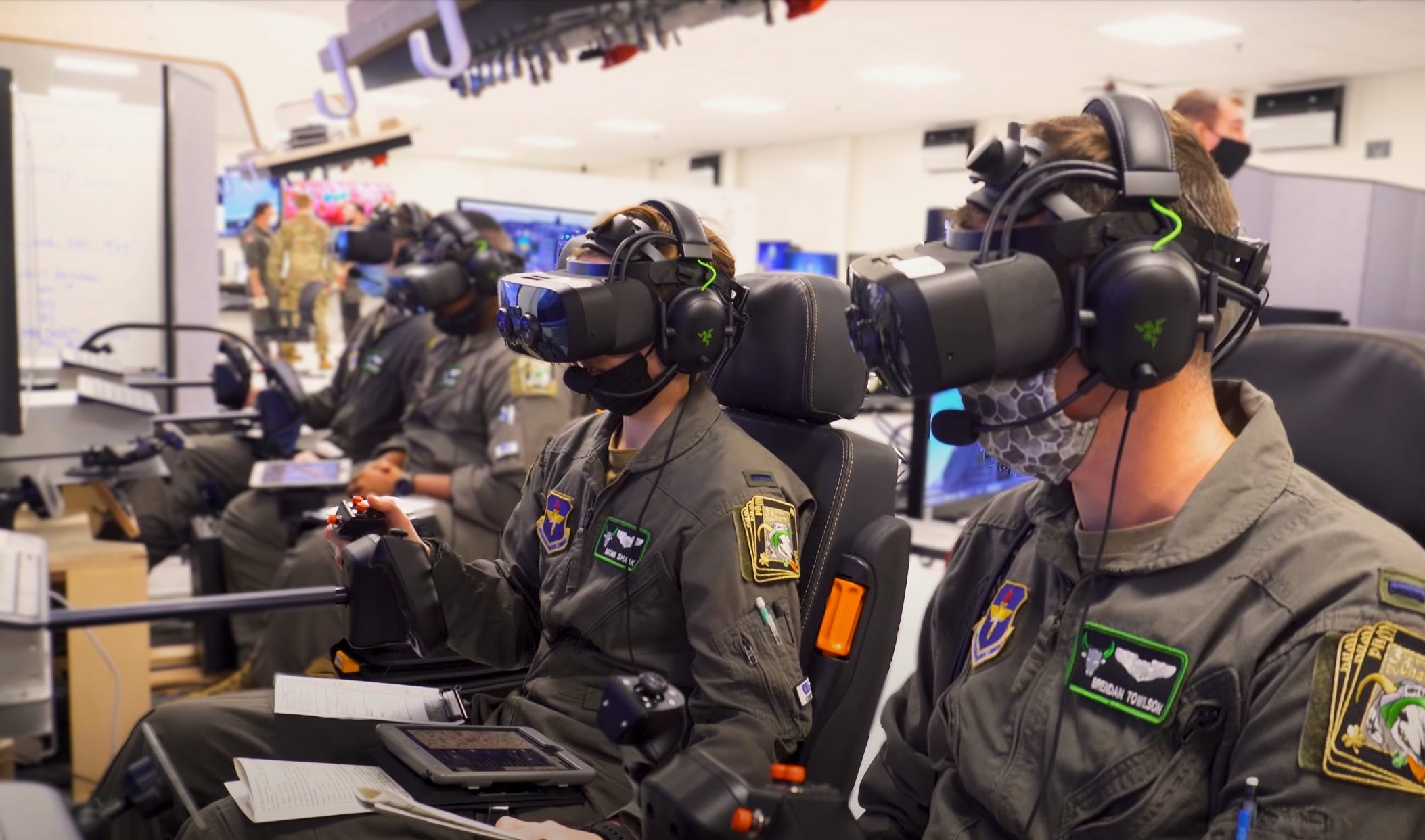XR Flight Simulators: The Doom of the “Dome” Simulator?
Extended Reality (XR) flight simulators have revolutionized flight training by providing immersive and realistic flight environments at lower costs. This blog evaluates the effectiveness of XR flight simulators, drawing on recent studies and data, including a comprehensive analysis recently conducted on a natural experiment of US Air Force ab initio pilots. Additionally, it explores the benefits and applications of XR technology in aviation training and evaluates the efficacy of XR flight simulators eventually replacing the traditional “dome” simulator.
The contents of this blog are based on a whitepaper submitted for ITEC 2025
Quantified findings on XR Flight Simulators
-
U.S. Air Force 3‑year study (UPT 2.5, begun July 2020): Before their very first flight, students who used VR improved on all 40 measured skills; 33 were statistically significant.
-
Embry‑Riddle University: Among 58 student pilots, adding VR cut the time to first solo flight by about 30%.
-
U.S. Air Force (follow‑on reports): After VR adoption, students reached solo about 10 flights earlier than the old approach with traditional classes.
- Increased availability: US Air Force Undergraduate Pilot Training bases have 60+ VR devices available for 300-400 pilots produced annually compared to four to six traditional dome simulators.
-
Home sim supplementation: Students who also use a home flight simulator can need up to 20 fewer flight hours than the FAA average.
-
Broader VR training (PwC study): In non‑aviation VR training, learners were 4× faster to master skills, 275% more confident using them, and more engaged and focused than in classroom or standard e‑learning.
Due in part to the global pilot shortage and a need to produce more pilots, the aviation industry continually seeks innovative solutions to improve pilot training efficiency and effectiveness. Traditional flight simulators, while effective, are often costly and limited in their ability to replicate diverse flying conditions.
XR flight simulators offer a promising alternative, providing immersive training experiences that can replicate real-world scenarios with high fidelity at a lower cost. This blog explores the relative effectiveness of XR flight simulators in pilot training, supported by recent research and practical applications and where those devices have provided efficiencies in flight training.

Benefits of XR Flight Simulators
Smaller Footprint Flexibility and Accessibility
XR flight simulators provide a smaller footprint than traditional simulators. Not only does this reduce costs, but it also increases accessibility and availability.
Typically, devices can be used in classrooms designed for pre- and post-flight briefing and debriefing typically co-located within the flight training locations. As a result, XR flight simulators offer flexibility in training schedules and more accessibility. Pilots can train at their own pace and convenience without needing to travel to a dedicated simulator location.
Like traditional simulators, XR devices are not constrained by weather conditions or aircraft availability, further enhancing accessibility. This flexibility makes pilot training more accessible to a wider range of individuals, including those in remote locations or those programs lacking the funds for a traditional simulator.1
Immersive Training Environment
XR flight simulators create an immersive training environment that closely mimics real-world flying conditions. Pilots can experience various weather conditions, emergency situations, and complex flight maneuvers in a controlled setting. Scenarios can be created cost-effectively and modified to place the pilot in immersive situations based on current conditions that are like the real-world increasing preparedness. This immersive experience enhances situational awareness and decision-making skills, which are crucial for pilot training.2
Cost-Effective Training
Traditional flight training is expensive due to the high costs of aircraft operation, maintenance, and fuel in addition to the expense of fielding and using a traditional simulator. XR flight simulators offer a cost-effective alternative by potentially reducing the need for actual flight hours, but even more cost effective compared to traditional dome flight simulators. Pilots can practice and refine their skills in a virtual environment, leading to significant cost savings for flight schools and airlines.2 The smaller footprint of immersive flight simulators also reduces building renovation or construction costs over traditional simulators. Without the need for expensive domes and custom Heating Ventilation and Air Conditioning (HVAC), immersive training devices can be used in a normal office setting with standard HVAC and power requirements (110VAC in US).
Cost Effectiveness Increases Flexibility and Accessibility
The lower cost of XR technology allows for the availability of more immersive training devices for pilots. For instance, US Air Force Undergraduate Pilot Training (UPT) bases have 60+ VR devices available for 300-400 pilots produced annually compared to four to six traditional dome simulators. This increased availability offers flexibility in training schedules and locations. Pilots can train at their own pace and convenience, without waiting for the traditional simulator availability. This flexibility makes pilot training more accessible to a wider range of individuals, including civilians in remote locations or flight schools that are cost prohibited.2
Applications of XR Flight Simulators
Initial Pilot Training
XR flight simulators are widely used in initial pilot training programs to teach basic flight skills and procedures. Trainee pilots can familiarize themselves with cockpit controls, flight instruments, and navigation systems in a virtual environment before transitioning to actual flight training.1
The latest data analysis conducted on the USAF pilots focused on initial pilot training and specifically the critical time leading up to the first flight referred to as a “dollar ride”. 3
It is during this training that immersive training devices have traditionally shown the most impact.
Recurrent Training and Skill Maintenance (Reps and Sets)
Experienced pilots require recurrent training to maintain their skills and stay updated with the latest aviation regulations and procedures. XR flight simulators provide an effective platform for recurrent training, allowing pilots to practice and refresh their skills regularly.2. Increasing the accessibility of devices allows pilots to better practice challenging skills at greater frequencies than were previously possible, including at home. Home systems have proven effective to deliver training benefits. A recent survey claims flight students who supplement with home flight sims can reduce up to 20 hours off flight training hours from the Federal Aviation Administration (FAA) average.4
Scenario-Based Training Effectiveness
Scenario-based training is a crucial element of pilot training, exposing pilots to various flight scenarios and realistic challenges. Due to their PC-based nature and use of consumer-focused software, XR flight simulators can swiftly replicate a wide range of scenarios, including adverse weather conditions, system failures, and emergency situations. This capability enables pilots to develop critical thinking and problem-solving skills effectively. Scenarios can be created or adapted on XR flight simulators rapidly. Retention of training in a VR environment has also proven to be more effectively applied. Consulting firm Price Waterhouse Cooper released a study that showed VR learners mastered content four times faster than in a classroom setting, were 275 percent more confident to apply skills learned after training, and were more emotionally connected and focused than classroom or e-learners.5
A 3-Year Data Analysis
In July 2020, the USAF integrated VR simulators into its undergraduate pilot training program, marking a significant technological and methodological shift known as “UPT 2.5.” A 3-year data analysis at the USAF pilot training base in Enid, Oklahoma, evaluated the impact of XR training on ab initio pilots’ maneuver proficiency leading up to and including their first flight, or “Dollar Ride.” The study showed that pilots benefited appreciably from VR training, with improvements in all 40 evaluated maneuvers, 33 of which were statistically significant.4
This data follows Embry Riddle University citing results that showed 58 pilots reaching solo 30% faster by integrating VR into its training curriculum.6 The USAF also has reported that since the introduction of VR into training, time to solo has been reduced nearly as much as ten sorties sooner than a traditional class.8

Extended Reality (XR) flight simulators have proven to be an effective tool in pilot training, offering immersive and cost-effective training solutions. They enhance safety, flexibility, and accessibility, making pilot training more efficient and comprehensive. However, it is essential to address the technological limitations, lack of physical sensations, potential for over-reliance, and adaptation challenges to maximize the potential of XR flight simulators in pilot training. By leveraging the benefits and addressing the limitations, XR flight simulators can play a significant role in shaping the future of pilot training and aviation safety. Although it might be premature to state that this technology will be the “doom” or end of the dome simulator, the technology has many upsides and is here to stay.
[1] “Extended reality (xR) flight simulators as an adjunct to traditional flight training methods: a scoping review” https://link.springer.com/article/10.1007/s13272-023-00688-5
[2] “Immersive Training Devices: Blending Real and Simulated Worlds Together” by Lockheed Martin. https://www.lockheedmartin.com/en-us/news/features/2023/immersive-training-devices-blending-real-and-simulated-worlds-together.html
[3] Urban, D, Pritchard, R, Beyond Illusions: Navigating VR Fidelity in Undergraduate Pilot Training – A 3-Year Data Analysis”; https://www.xcdsystem.com/iitsec/proceedings/index.cfm?Year=2024&AbID=134101&CID=1060#View (2024)
[4] Godlewski, Meg, Survey: Home Flight Sim Helps Prepare Real-World Pilots, https://www.flyingmag.com/training/survey-home-flight-sim-helps-prepare-real-world-pilots/
[5] Bryars, R, Pressnell, A, How Are Virtual & Augmented Reality Used in Aviation Training? https://www.higherechelon.com/how-are-virtual-augmented-reality-used-in-aviation-training-2/
[6] McLeod-Hunt, C, Embry-Riddle trims student start-to-solo time by 30 percent,
[7] EASA approves the first Virtual Reality (VR) based Flight Simulation Training Device, https://www.easa.europa.eu/en/newsroom-and-events/press-releases/easa-approves-first-virtual-reality-vr-based-flight-simulation
[8] Tajdeh, Y, Air Force Embracing New Tech to Solve Pilot Shortage,
Contact our sales team today to discuss transformative VR/XR-based flight training solutions: